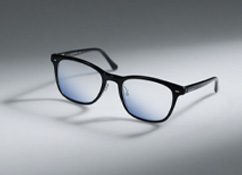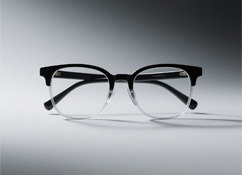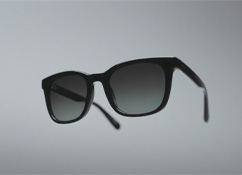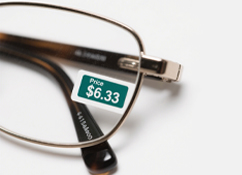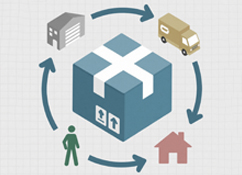Walk into a physical eyeglass store for a basic frame and lens, and you’ll likely face a price tag that rivals a mid-range smartphone—even as global demand for glasses surges with our screen-obsessed lives. Yet millions cling to scratched, outdated pairs because a new set feels financially out of reach: why pay $200+ for something that should be affordable?
Just how disconnected are production costs from retail prices? A 202X CCTV market investigation pulled back the curtain: in Chinese manufacturing hubs, a basic resin lens costs as little as $1.40, a plastic frame ranges from $2.80 to $4.20, and even premium titanium frames (including polishing and electroplating labor) total less than $14. A top eyewear brand’s 202X IPO prospectus further laid bare the math: the total production cost for a complete pair of glasses? Under $8.50. Standard single lenses? An average of $0.70. Even “special feature” lenses—like blue-light blocking or anti-glare coatings—add just cents to the cost, capping at $1.40 per lens.
By the time these glasses reach consumers, that $8.50 pair is marked up to $115–$215 at major retail brands. A $0.70 lens? It sells for over 160x its production cost. For shoppers, the math is infuriating: you’re not just buying glasses—you’re paying for a system that inflates prices at every step.
The paradox? Even with these sky-high prices, many brick-and-mortar eyewear chains operate in the red. Retail costs devour 50% of revenue: rent for prime locations (especially near schools, where stores cluster like coffee shops), employee wages, optometrist fees, utilities, and maintenance. Every pair sold also includes professional services—from eye exams to frame adjustments—that add labor costs. For retailers, the choice is simple: charge more, or go out of business.
The blame doesn’t stop at stores. The supply chain—manufacturers to distributors to retailers—adds layers of markup, all passed to consumers. A $1.40 lens might go through three middlemen before hitting a store shelf, each taking a cut. By the end, the price has multiplied beyond recognition.
Enter online eyewear platforms: a model that cuts out the middlemen (and overheads like rent and in-store staff) to offer prices unheard of in physical stores. Viral TikTok ads for $0.55 prescription glasses aren’t just clickbait—they’re a direct challenge to the industry’s status quo.
Online shopping also solves pain points for busy shoppers: virtual try-ons let you test frames from home, partnered optometrists offer online eye exams, and free delivery skips the trip to the mall. It’s no wonder Gen Z and millennials—raised on e-commerce—are flocking to these platforms: why pay $200 for a store-bought pair when you can get one online for a fraction of the cost?
But online shopping isn’t perfect. Critics warn that at-home eye exams often lack the precision of in-person optometrists—mistakes here can lead to headaches, eye strain, or even worsening vision. Without hands-on fitting, some shoppers end up with frames that slip down their nose or pinch their temples. And for those with complex prescriptions (like astigmatism or bifocals), online options can feel risky.
The eyeglass industry’s contradiction is stark: to consumers, it feels like a profiteering sector—yet retailers and even brands struggle to turn a profit. Physical stores are stuck between rising costs and shopper resentment; online platforms offer affordability but lack trust.
The rise of $0.55 glasses isn’t a “sham”—it’s a symptom of a broken system. True change will require bridging the gap: making professional eye care accessible online, or helping physical stores cut costs without sacrificing quality. For now, shoppers have more choices than ever—but the search for “fair-priced, reliable glasses” continues.
In a world where 3.5 billion people need vision correction, the eyeglass industry can’t afford to stay broken. The $0.55 online pair isn’t the solution—but it’s a start.






